Since the “K” is pronounced, my title didn’t end up the clever alliterative heading I had hoped. Nor is it in reference to the nearly hundred Knutsen instruments I have yet to add to the Archives. Instead, these are some brand-new ephemera discoveries, a particular passion of mine. None have yet appeared on the site.
First up is a picture postcard of an unnamed duo (trio, if we count the dog). Submitted by Shelly Chester, it depicts a colorful gentleman with a Knutsen c.1900 Symphony harp guitar.
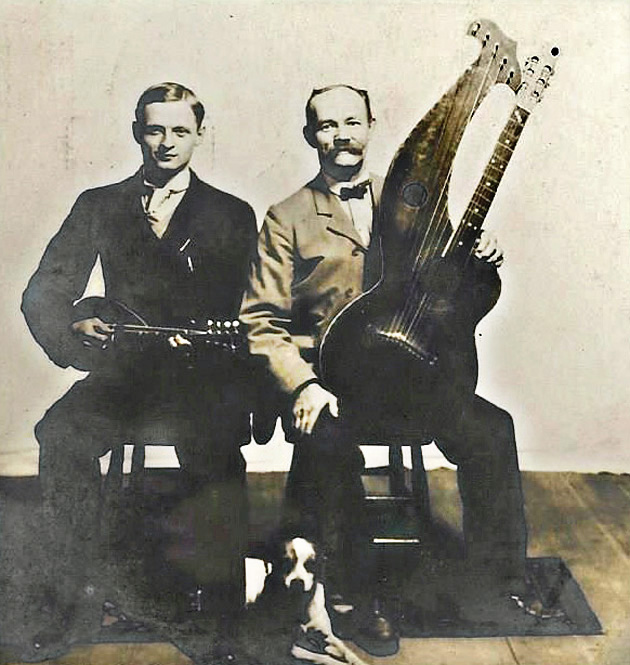
Next is an absolutely wonderful, rare photo of a female quintet, courtesy of Amy Mills at Retrofret.
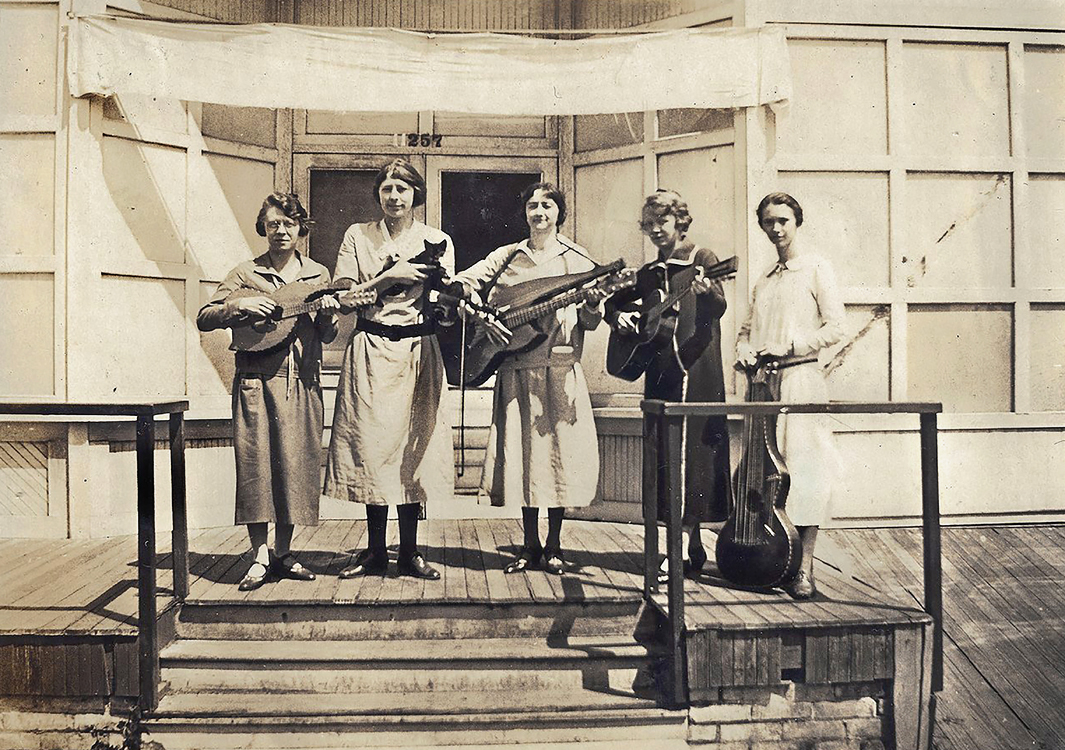
This arrived just in time to include in our ongoing (until May) Harp Guitar exhibit at The Museum of Making Music in Carlsbad, CA (we also included it in the catalog, available from their gift shop). Of the four instruments, three are Knutsens – all of the 1915+ “New Hawaiian Family” line. It looks like a specific choice and dedicated commitment by these women; aren’t you dying to know who they were, and where, what and how they played?!
My own very first Knutsen historical image find (somewhere around 2000) was a postcard of the Harmony Four. Readers may remember the giant-sized harp guitar in the group that I analyzed.
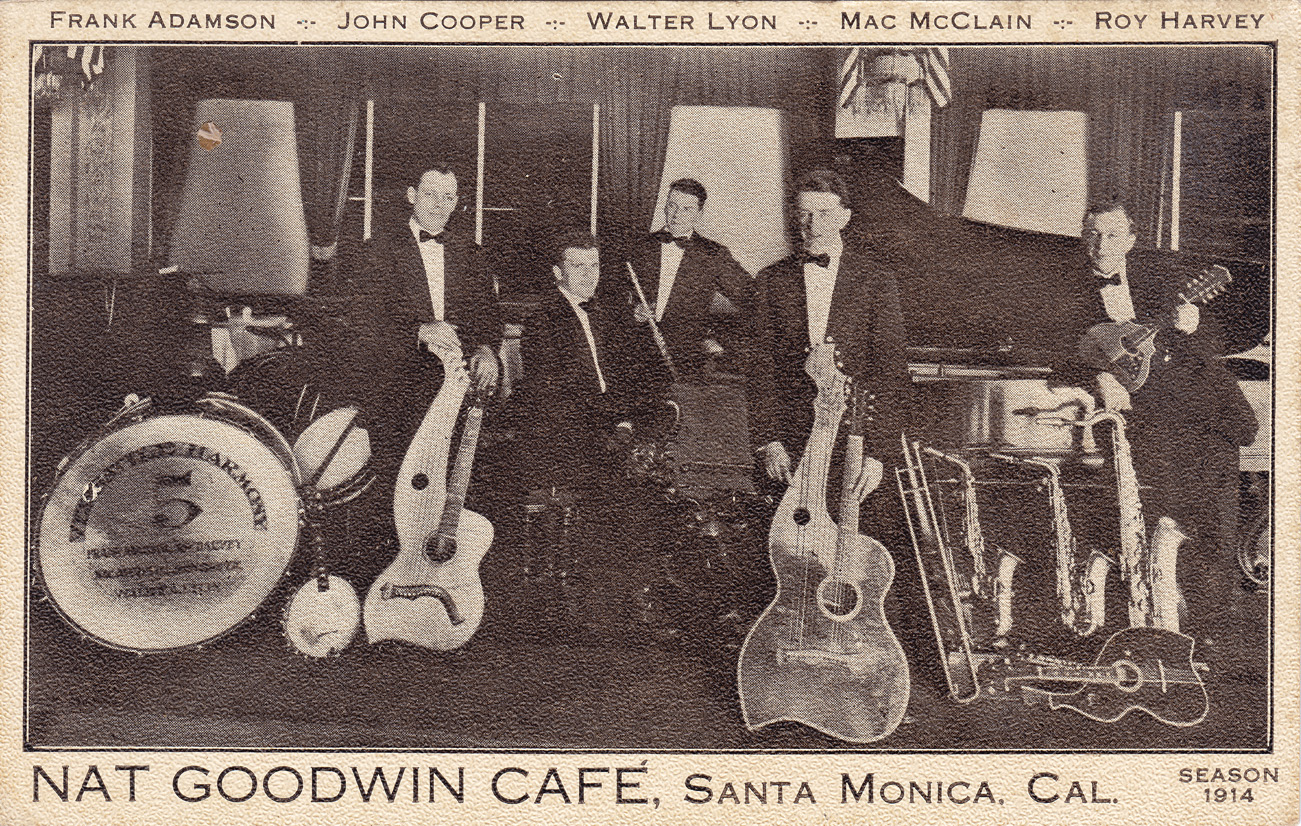
Here’s a brand-new image of the group, at the same Nat Goodwin Café in Santa Monica, California, during the same “1914 Season.” The lineup has changed slightly, with no way to know which came first. Here, they’re the “Harmony Five,” adding John Cooper on piano, while a Mac McClain holds a giant Knutsen harp guitar in place of Eddie Newton. They also have a lot more Instruments, with an array of horns, banjo, drums, and an extra mandolin (Stahl? Vega?). All three Knutsen instruments are still there, the giant HG front and center. Or is it? No, beyond all reason, this is another, nearly identical c.1913 Knutsen.
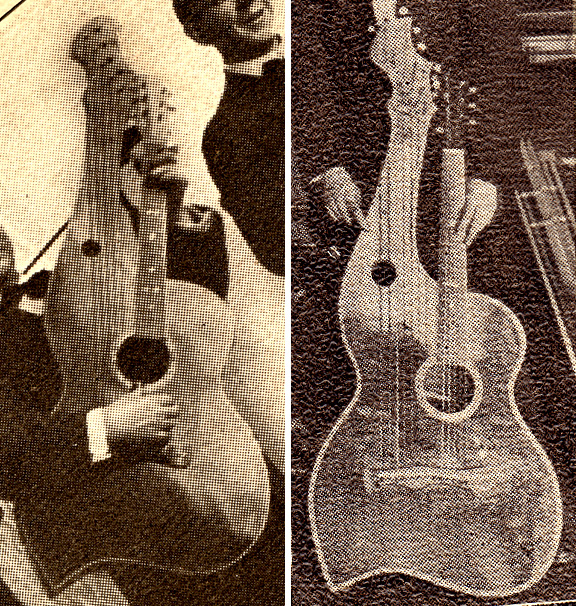
Above: the original is on the left, and the “new” one on the right. The dot printing of each postcard obscures critical details, especially the bass headstocks, and others things are skewed due to the perspective (like the larger arm hole and the main sound hole moved off to the right). Ultimately, it is the faint appearance of the fret markers, which seem to have the 10th & 12th markers swapped. Note how each seems to show the arm hitting the 10th fret. The new one also has 7 subs. Originally, I thought the left instrument (HGS24) was a long-scale instrument. Now, I’m not so sure. Both may just be giant body instruments with standard 25-1/2” (or close) scales, like some recent finds (Retrofret’s 18.5” wide body instrument and my own 8-bass 18-7/8” instrument).
Next up: a second, recently discovered Knutsen flyer from the mysterious “Minnesota period.” Meaning, when Knutsen was marketing his instruments heavily in Minnesota, where his extended family lived and presumably helped with his advertising and sales. (Acquisition funded by The Harp Guitar Foundation – thank you, donors!)
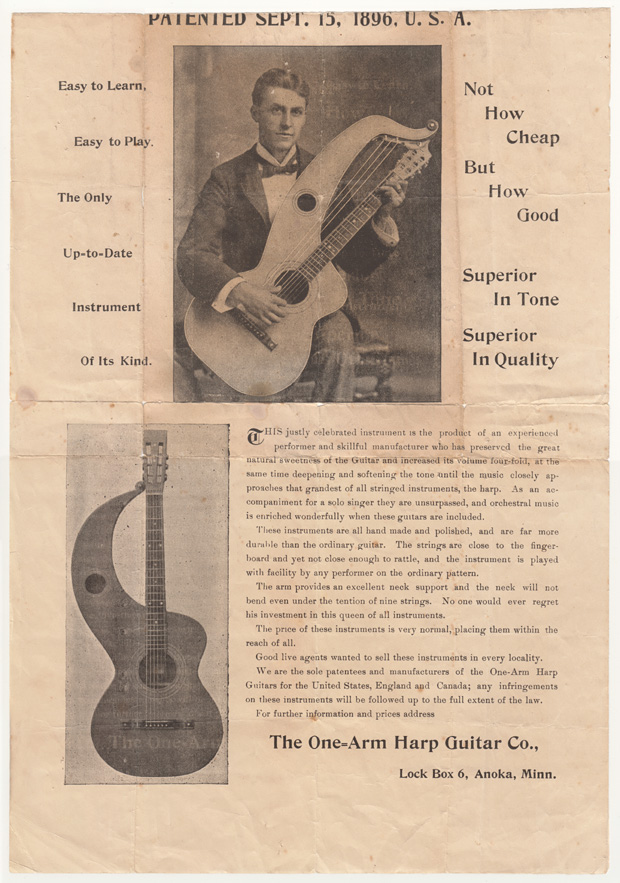
You’ll remember the other flyer that we think included Chris’ brother Eddie, highlighted in Knutsen’s Slippers. I think this one, from a few years earlier, could be a younger Eddie, pre-moustache. This flyer is much easier to date; within an 8-month window, in fact. It must have been created sometime after the first patent was approved (Sept 15, 1896) but before Knutsen applied for his next one (on May 17, 1897). The original patented 6-string appears lower left, while “Eddie” is holding an early example of what would become the second patent instrument. Whereas its patent would include 5 sub-basses, this is one of the 3-sub specimens, and the flyer specifically mentions the tension of “nine strings.”
We know of no Knutsen members specifically living in Anoka, Minnesota, a northwest suburb of the Twin-Cities where the rest of the Knutsen clan lived. Whoever the gentleman is – Eddie or a business colleague of Chris Knutsen – someone is marketing the instruments from a P.O. box (“lock box 6”) in this town. Knutsen has also titled this business “The One-Arm Harp Guitar Co.,” a name he may have been using himself in Port Townsend for all we know (it’s the first evidence of this specific name).
And the best for last…
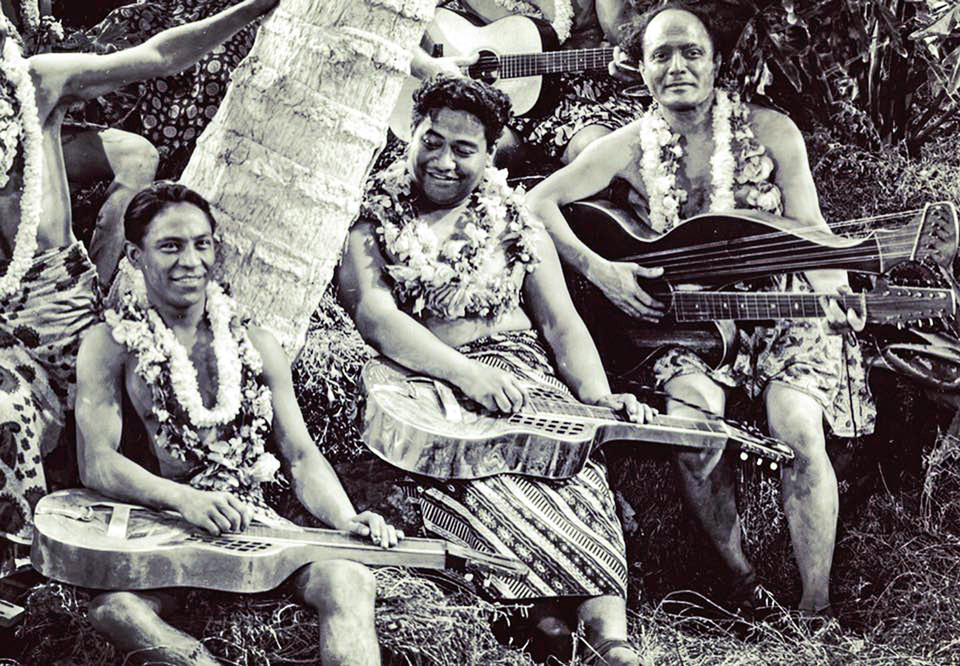
This photo comes courtesy of Soren Venema of Amsterdam’s Palm Guitars. It is a never-before-published image of Sol Hoopii (center), identified by Les Cook of Grass Skirt Records. He believes the steel player to Hoopii’s right is Sol K. Bright, a Hoopii protégé. Their association in Los Angeles occurred during 1928-1930, and I was dying to ascertain the setting of this photo. When Les asked some of his Hawaiian music expert pals, it actually turned out to be from a bit later – 1934 to be exact: the Hollywood film Down to Their Last Yacht. Yes, Al Dodge (once-fabled member of the Cheap Suit Serenaders) immediately identified the shot it and pointed us to a YouTube clip of the segment! The harp-guitarist has not yet been identified, but he does seem to know what he’s doing (check him out near the end). He’s playing one of those dream instruments – something you know Knutsen must have built but we just haven’t found yet. And man, would I love to find this one!
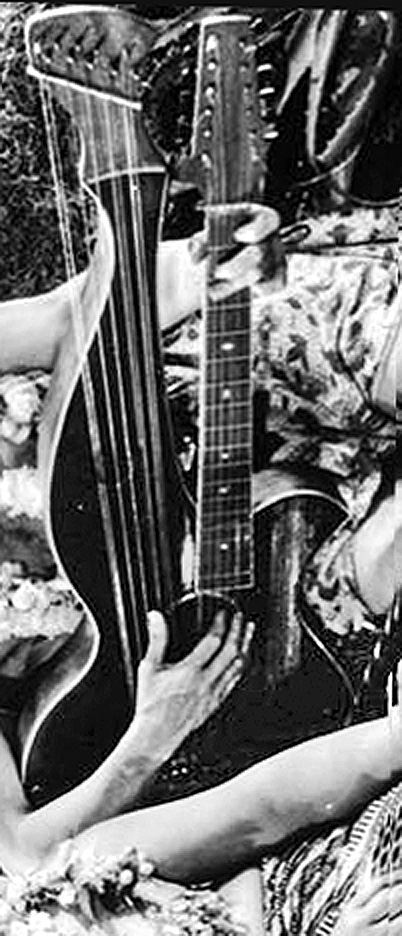
Built at the end of Knutsen’s “standard harp guitar” era circa 1913-1914, it’s another double-point harp guitar with 12-strings on the neck. We know of three other 12-string neck HGs. But this one has the five sub-bass courses doubled also! It’s about 20 years old by this date, which would explain significant pick wear, but I’m not positive that’s what we’re seeing here. The priceless photo is of very decent quality and we can see that the player has the sub-basses strung in octaves (like the neck would be; ironically, it has been strung singly), but left two of the inner courses single.
Interestingly, there is a known Knutsen-Hoopii connection, as both were musical members of Aimee Semple McPherson’s Angelus Temple in Los Angeles (which became The Foursquare Church; my colleague Darrell Urbien was once working on this project for me…perhaps one day he will finish it). Of course, L.A. connection with Hoopii or not, Knutsen harp guitars were well known among Hawaiian musicians.
Incredibly, it turns out that this is not the first Knutsen harp guitar with doubled subs. Comparing with the others, I noticed that Inventory # HGS39, in the Archives for years, is exactly the same! It’s a different specimen (the main headstock shapes are each quite distinct), but the bass head is pretty much identical. What I had apparently taken as Knutsen’s brass screws (which function as his “nut posts/guides”) below the tuner shafts are obviously a second row of zither pin tuners. Blowing up the original scan now, I can also make out at least one doubled course.
At this point, Knutsen’s “Double Point” Seattle harp guitars have fallen firmly into two groups: short-scale instruments with 19-20” scales and standard 5+6 stringing, and full-size instruments with 12 strings on the neck (click this link and scroll up 1 row). With this latest discovery, four amazing specimens of the latter are now archived, two of which have doubled bass strings! Knutsen thus joins Holzapfel as the second American builder to create such a novelty.
How logical when you think about it…and how incredible they must have sounded!

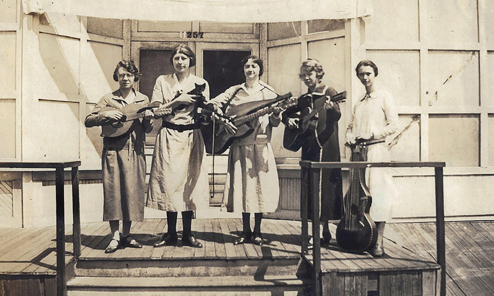
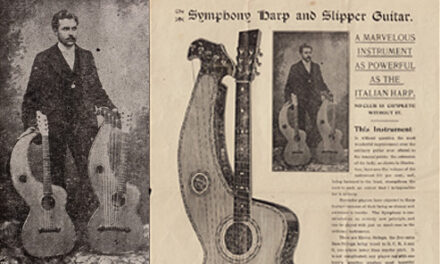
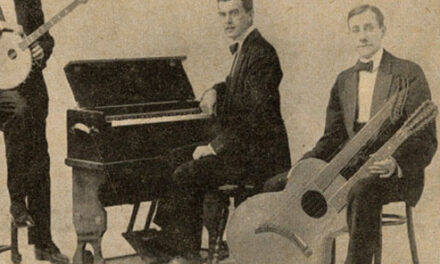
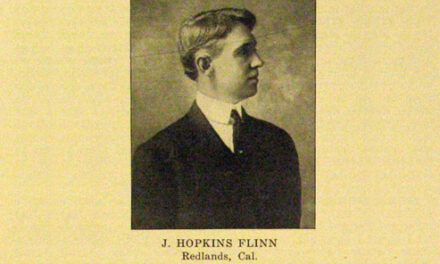
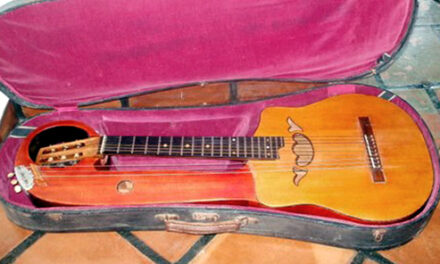
Great article, Gregg! I wish I had known about Palm Guitars — I was just in Amsterdam a few days ago. Maybe next time……